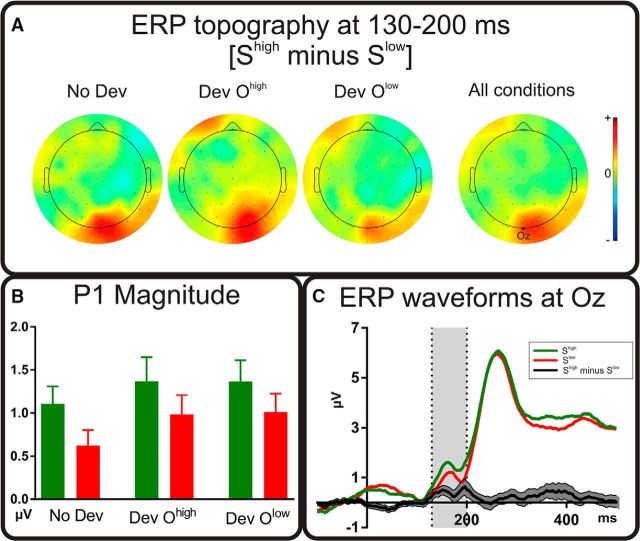Figure 2.
P1 results. A, Topographical figures mapping the differences between stimuli that were more frequently related to the high-value outcome (Shigh) and to the low-value outcome (Slow) for all conditions. Relative scale (minimum/maximum values): −1/+1 μV. B, Magnitude of the P1 components for all conditions calculated as the mean activity at electrode Oz in the 130–200 ms time window. Error bars indicate within-participant SEM. C, Mean evoked activity locked to stimulus onset (100 ms baseline also shown) for the Shigh and Slow at electrode Oz. Data are the result of averaging the three outcome devaluation conditions. Black lines represent the Shigh minus Slow difference waveform. Shaded areas represent the SEM of this difference.

